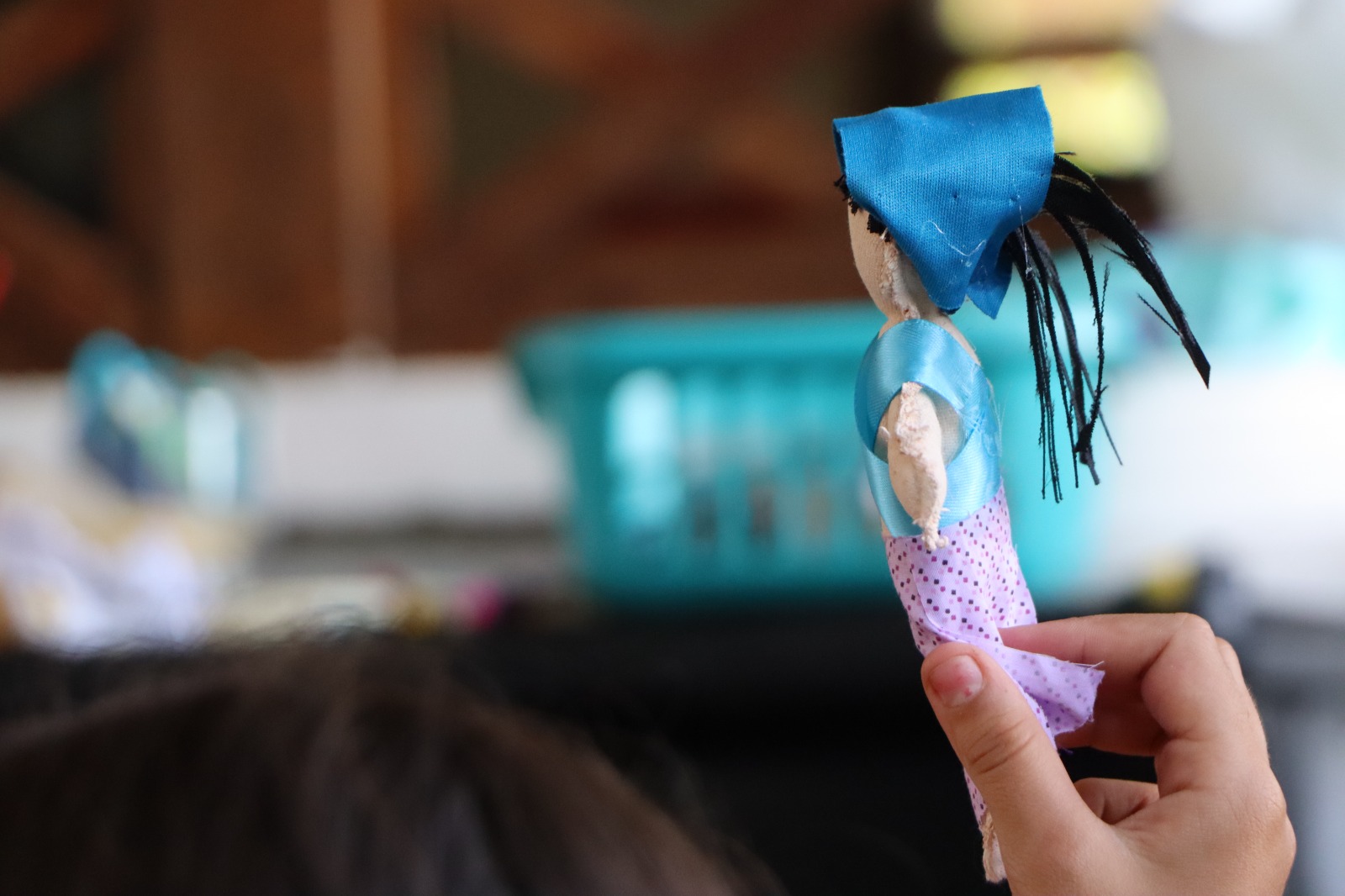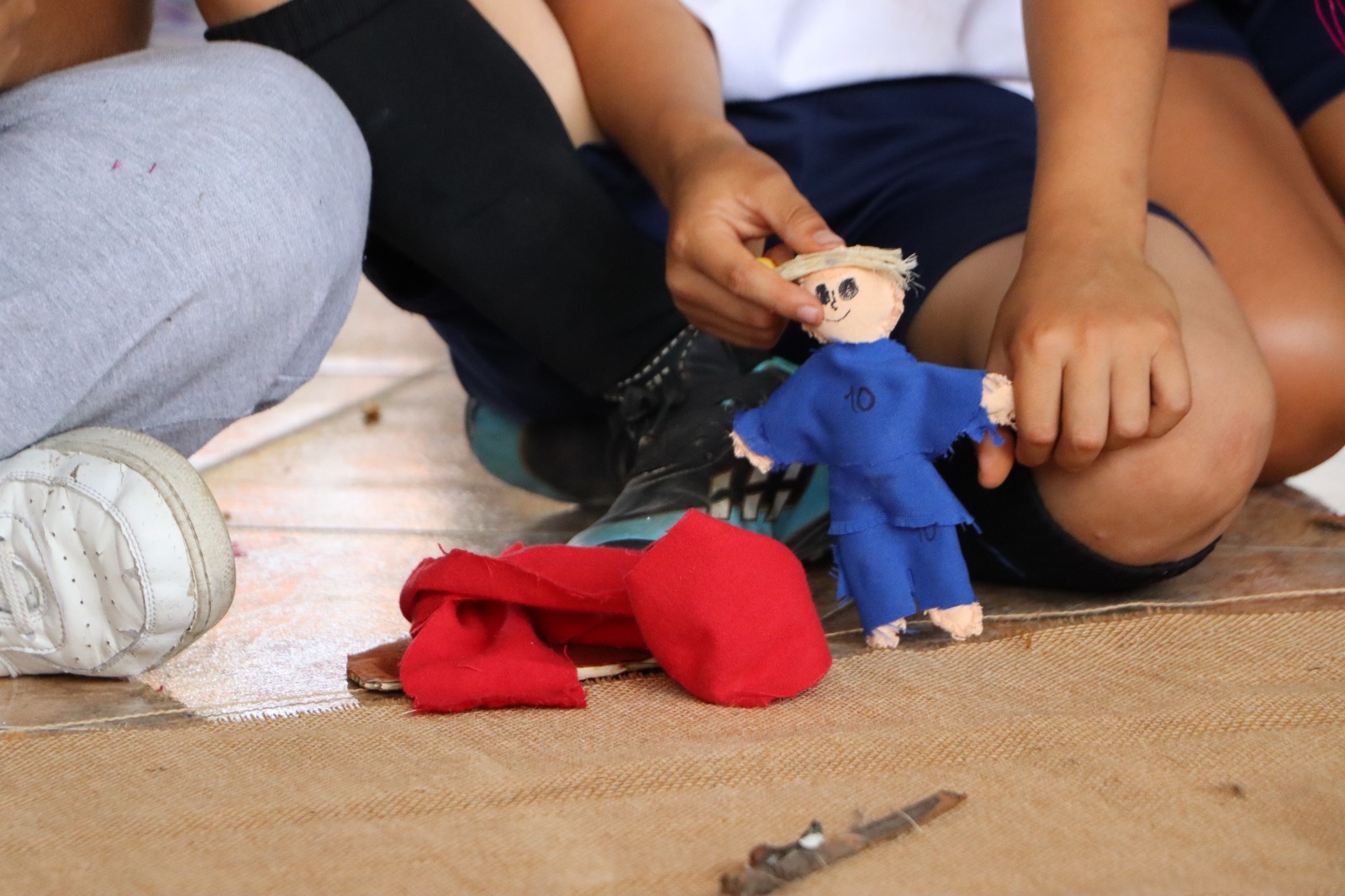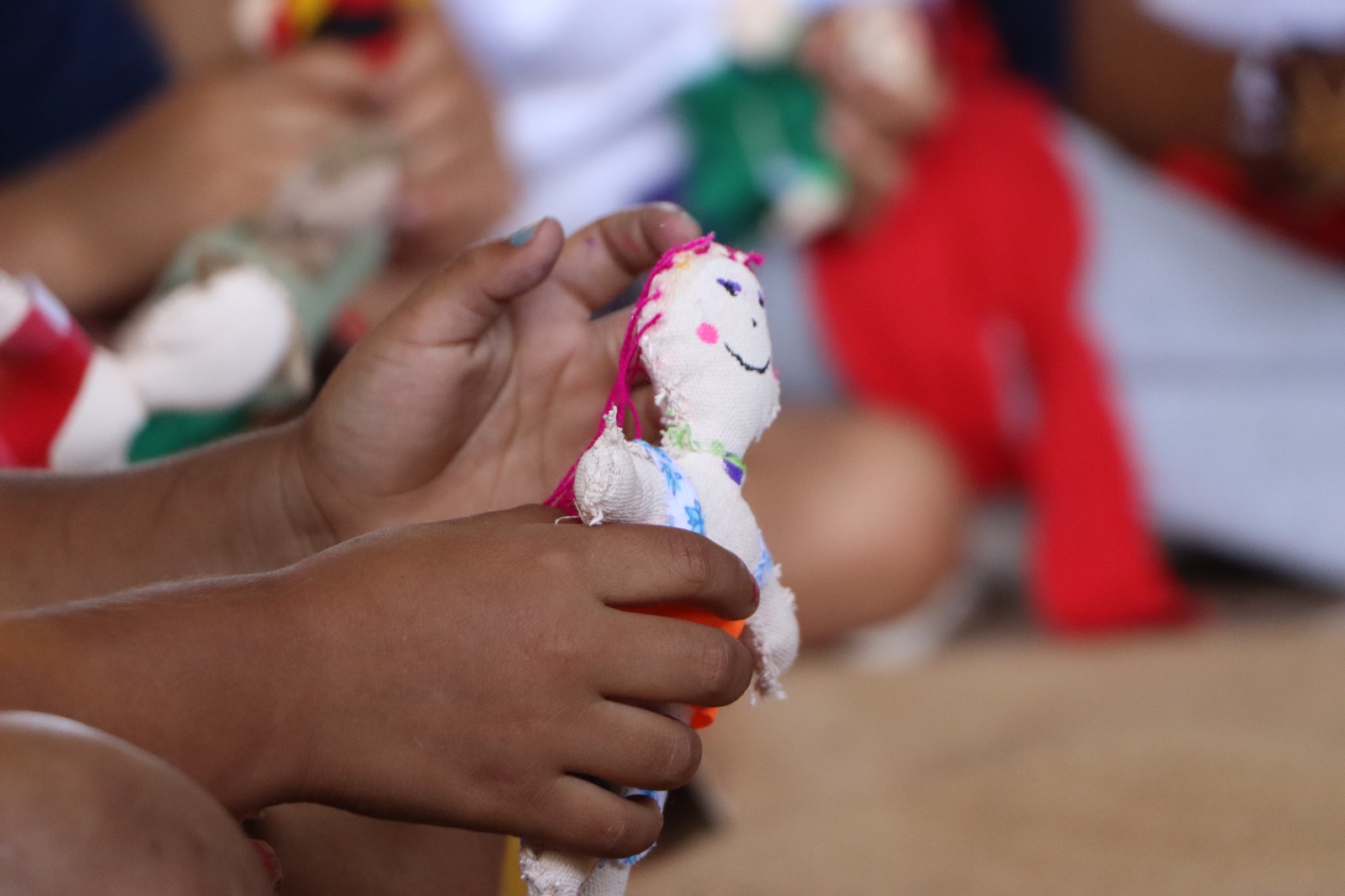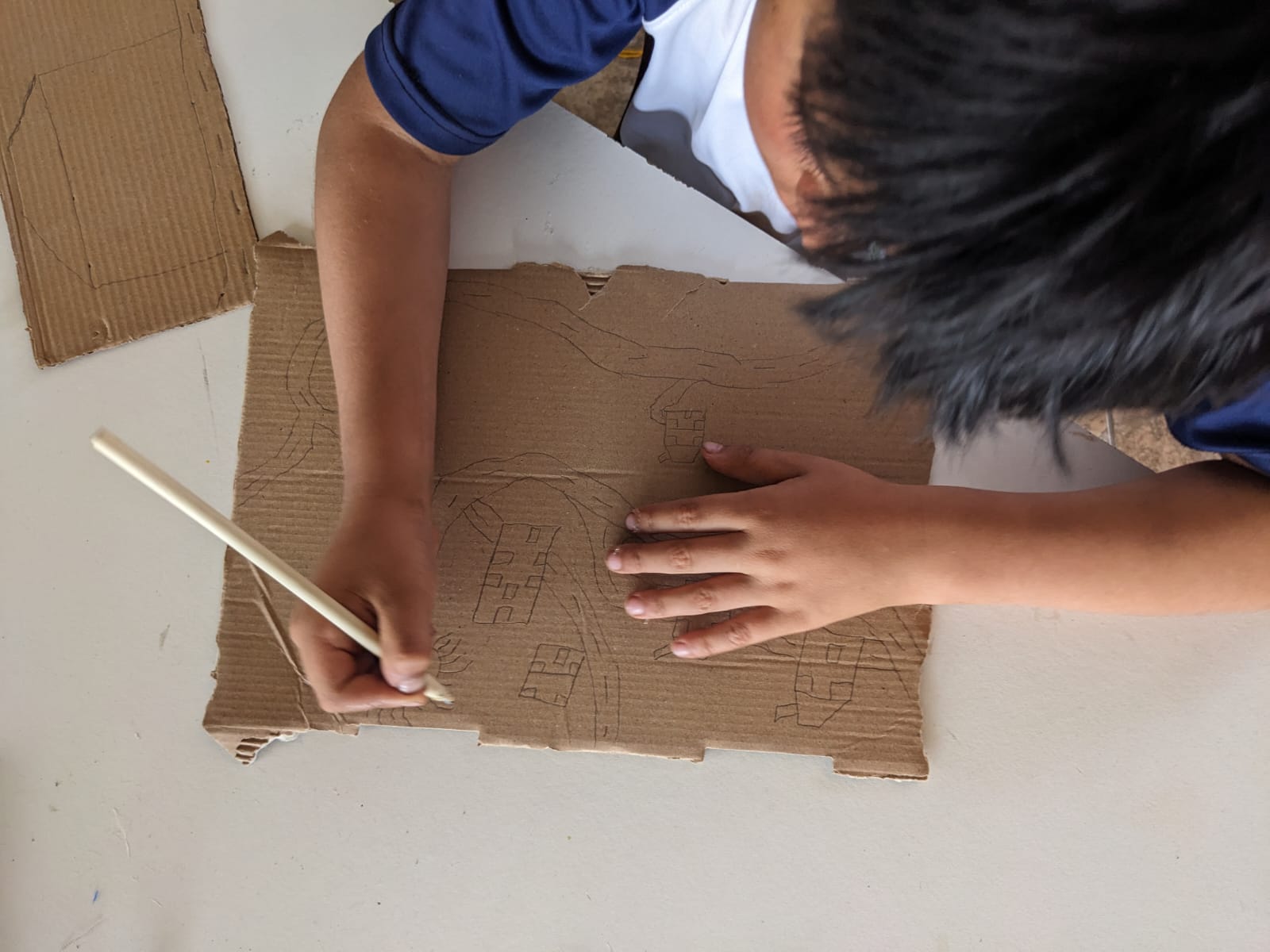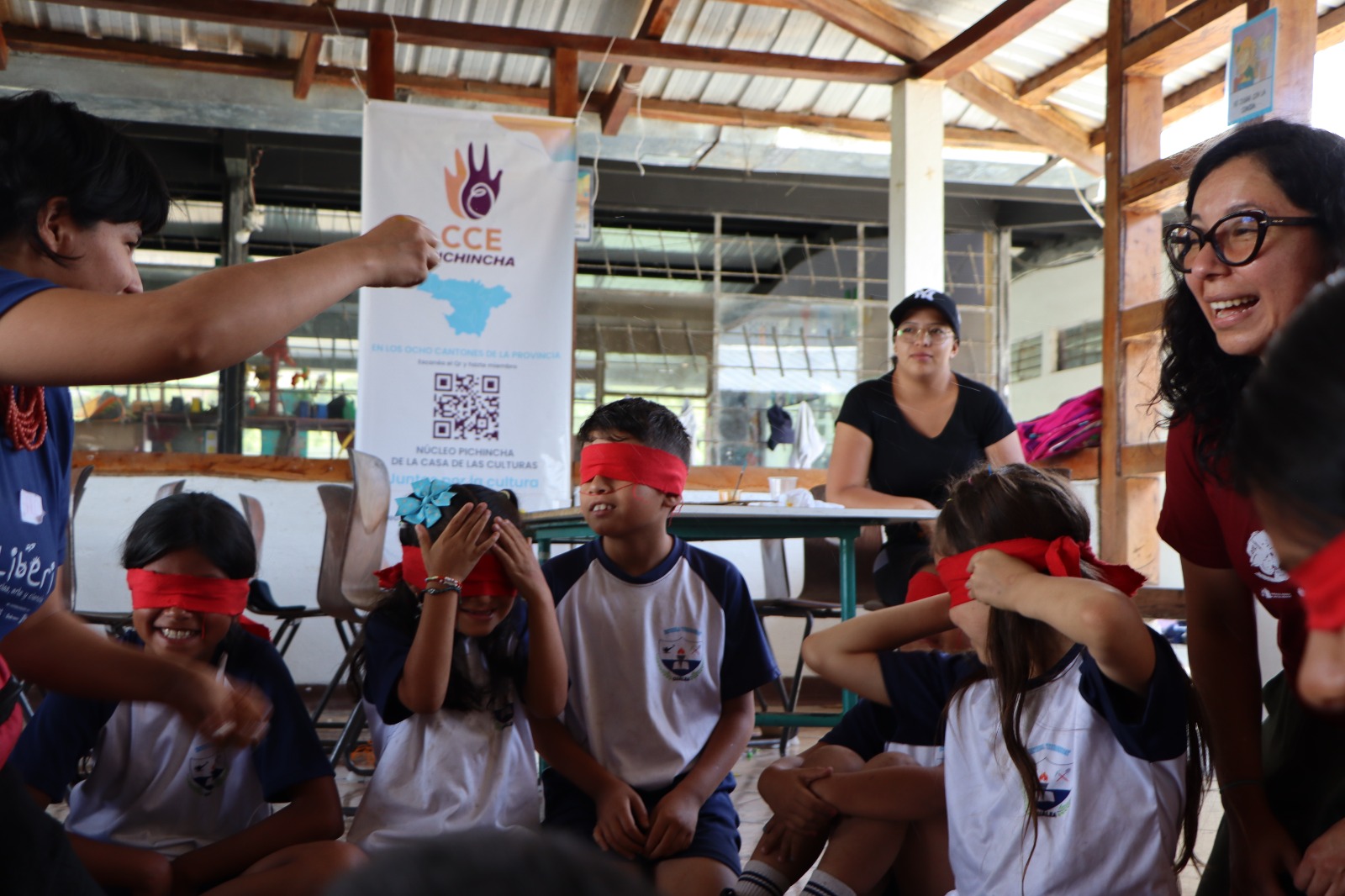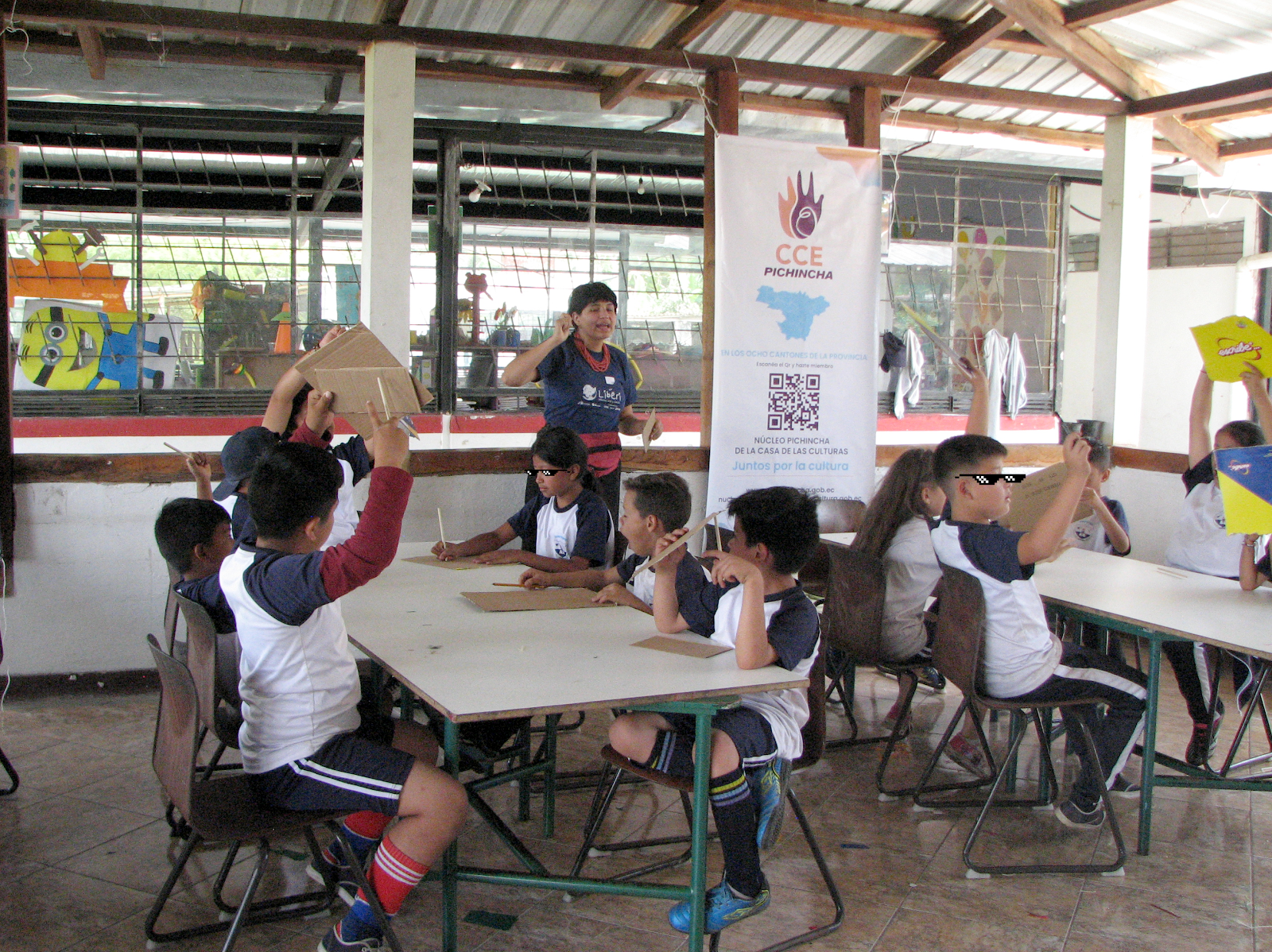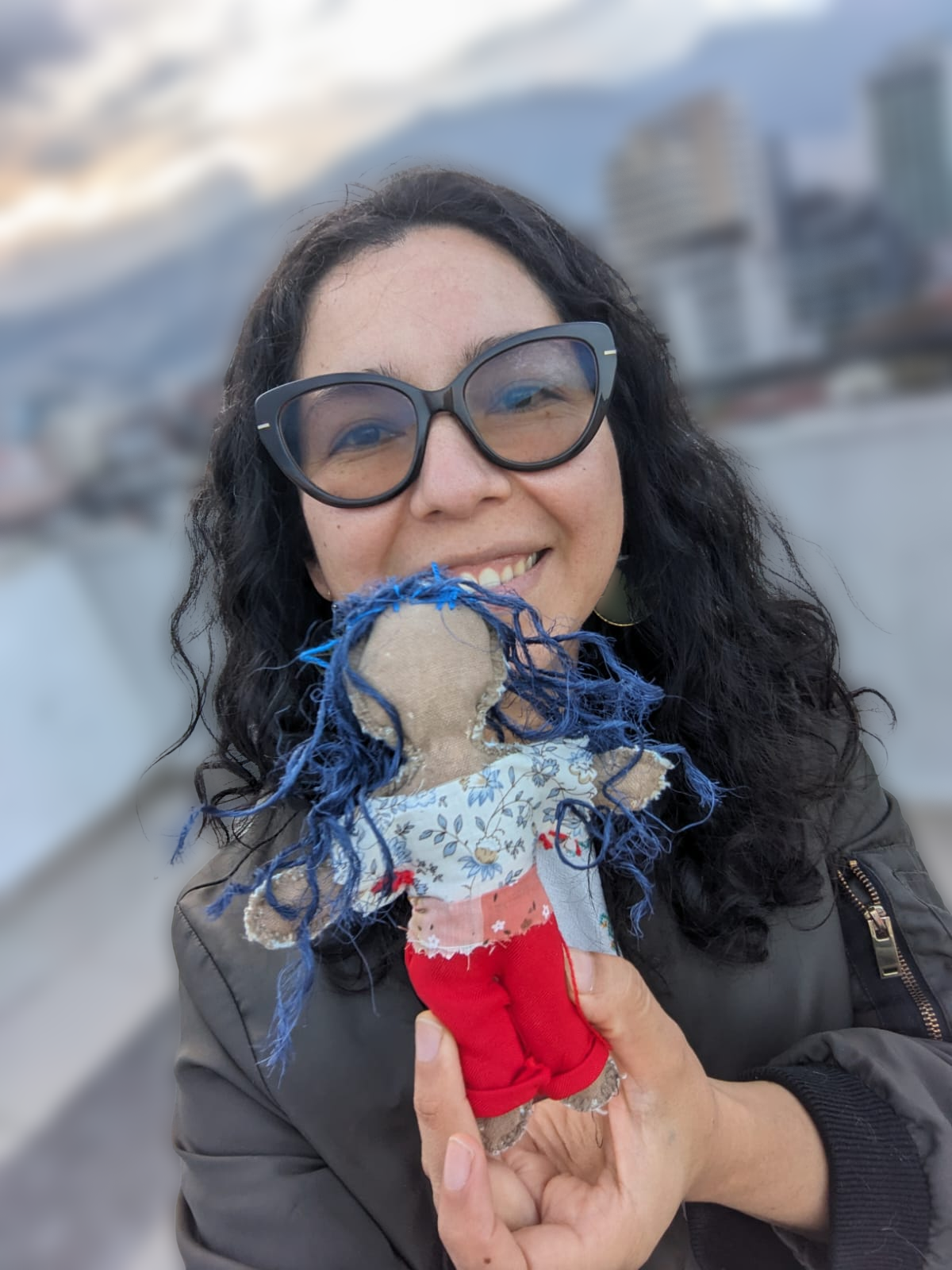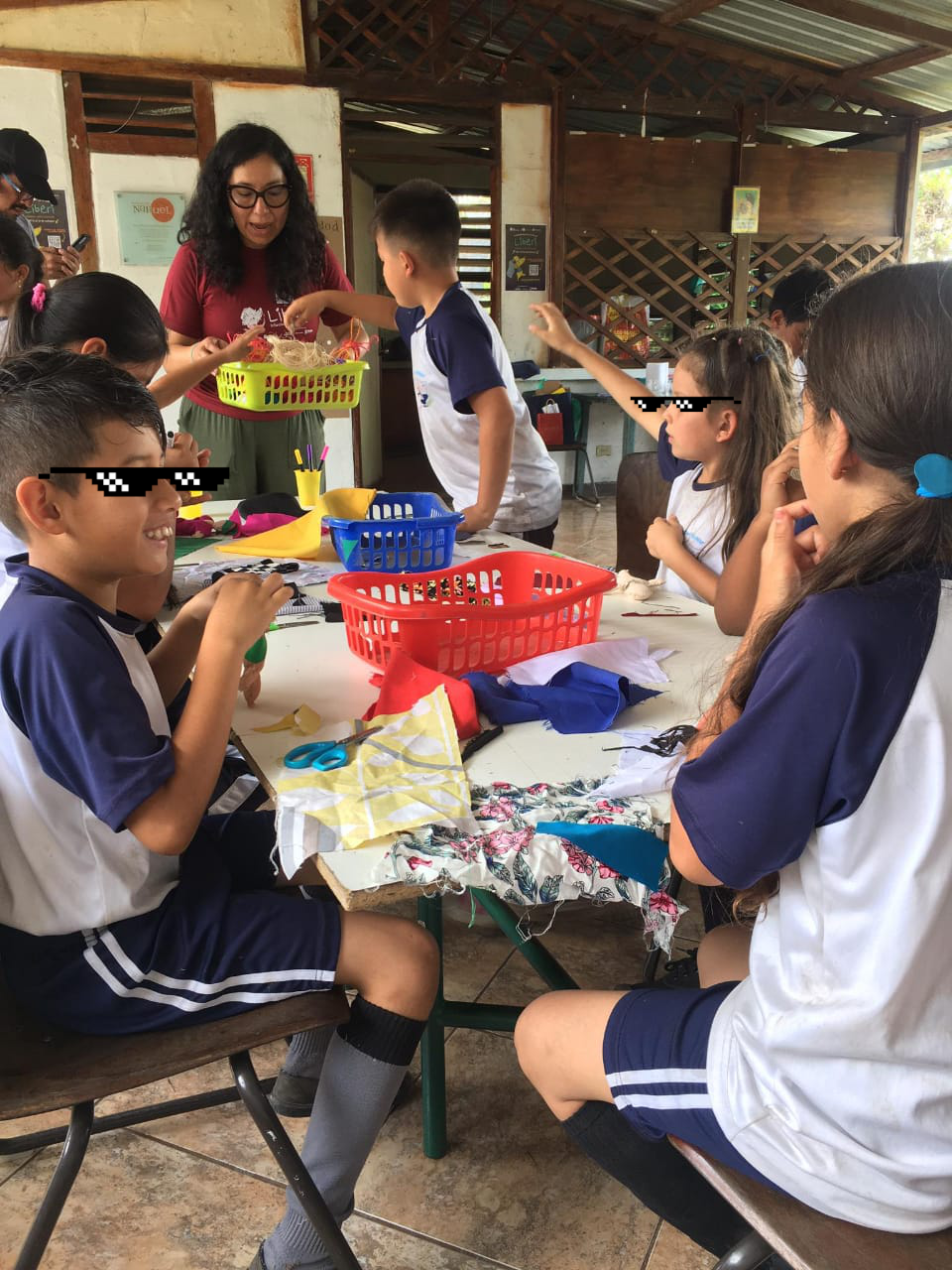Título: Calzones Parlantes, por la no
violencia hacia las mujeres, 2011 en adelante
Calzones Parlantes es un proyecto de arte por la
no violencia hacia las mujeres realizado en el barrio La Venecia, ubicado al
Sur de Quito, Ecuador, que se llevó a cabo inicialmente en el marco del
Encuentro Internacional de arte Al zur-ich 2011, organizado por el colectivo
Tranvía Cero. La propuesta fue realizada por Andrea Zambrano Rojas.
Calzones Parlantes, por la
No Violencia hacia las Mujeres, es un proceso de diálogo y compartir entre
mujeres sobre la violencia hacia nosotras, de conformación de espacios de
confianza, de vivenciar los cuidados y de construcción colectiva e intervención artística de calzones.
En el Proceso inicial en el 2011 las
autoras somos: Blanca Fernández, Nelly Chicaiza, Violeta Ortíz, Consuelo
Mendoza, Dolores Toaquiza, Rosario Espinoza, Marjorie Oleas, Emma Vega, Ruth
Escobar, Luz Jiménez, Myrian Guairacaja, Juana Quishpe, Magali Olivo, Elizabeth
Balseca, Norma Revelo, Emma Oña, Lucía Peñafiel (autoras de los calzones-obras
y hacedoras en el proceso) y Andrea Zambrano Rojas (concepción del proyecto y elaboración
y ejecución de metodología y hacedora en el proceso). Nina Velasco y Tranvía Cero (registro
fotográfico y acompañamiento a wawas en el primer proceso, 2011).
Luego, en el 2012 para darle
continuidad al proceso de Calzones Parlantes, varias de las autoras del proceso
del 2011, trabajamos con el financiamiento y apoyo de la Fundación Museos de la
Ciudad, como parte del Programa de Gestión Social y Educativa. Y en el 2013 se
llevó a cabo una exposición del proceso en el barrio La Venecia, nuevamente con
la Fundación Museos de la Ciudad, pero en este caso con la difusión de
Mediación Comuntaria.
El Taller Calzones Parlantes también
fue llevado a cabo de manera virtual, en Septiembre del 2021, durante la
pandemia, y fue realizado en colaboración con NAKA Danza Teatro y Mujeres Unidas y Activas (MUA).
Autoras: Mujeres Unidas y Activas.
Leticia, Cindia, Ana, Maria, Agustina, Luciana, Victoria, Adriana, Paulina
(Mam-Spanish Interpreter), Debby; y Andrea Zambrano Rojas en la elaboración y
ejecución de la metodología.
En Marzo de 2023 Calzones Parlantes se
llevó a cabo en Guaranda, Ecuador, y fue realizado en colaboración con Carolina
Calero, Foro Mujer Bolívar y el El Taller, Lugar Creativo. Las autoras somos:
Edita, Viviana, Nena, Gaby, Mishelle, Mishell, Vanesa, Tifani, Grey, Carolina;
Flor Marianela; y Andrea Zambrano Rojas y paO Viteri-Dávila en la
re-elaboración y ejecución de la metodología.
El Taller Calzones Parlantes, por la
no violencia hacia las mujeres, se está llevando a cabo durante el 2023, en
Universidad de Las Universidad Intercultural de las Nacionalidades y Pueblos
Indígenas Amawtay Wasi. Autoras: Andrea Sigcha, Daniela Cevallos, Dayana Vaca,
Doménica Sánchez, Emely Benavides, Jennifer Cevallos, Juliana Hernández, Karla
Fabara, Lesly Espinoza, Lesly Maiza, Mishell Amuy, Mishel Guajalá, Noelia
Triviño, Yuri Araujo; y Andrea Zambrano Rojas en la elaboración y ejecución de la
metodología.
En el 2023 también se hizo un taller
en Tokyo, Japón, en la librería feminista ETCbooks, la ficha técnica está en
construcción.
Taller Calzones Parlantes, por la no violencia contra las mujeres
Marzo de 2024
El 7 de Marzo, llevamos a cabo uno de los talleres del proyecto Calzones Parlantes, por la no violencia hacia las mujeres en las Jornadas Académicas de Género y Feminismos, mujeres y diversas, luchas comunes, organizadas por la Universidad Intercultural de los Pueblos y Nacionalidades Indígenas Amawtay Wasi
El proyecto Calzones Parlantes, por la no violencia hacia las mujeres, que inicia en el 2011, se propone como una experiencia de diálogo sobre cuidados y no violencia contra las mujeres, y un espacio de creación colectiva de obra artística; a través de metodologías que vienen de la educación popular, la educación artística y los feminismos populares y comunitarios.
Participaron de este taller y registran su autoría: Melody, Olga María Cabascango, Sinchi Diana, Alexandra Galárraga, La Cata y Alexandra Clavijo.
En este taller de Calzones Parlantes compartimos:
Andrea Zambrano Rojas: re-elaboración de la metodología y acompañamiento en cuidados.
Emely Benavides: re-elaboración de la metodología.
Lesly Espinoza: re-elaboración de la metodología.
Salomé Quitto: ritualización del taller, del espacio y acompañamiento en cuidados
Carolina Sánchez: música y fueguito creativo, actividad que le compartió Carolina López Revollo, en Bolivia.
Diana Barragán: acompañamiento en cuidados.
Gracias al trabajo de quienes organizaron las Jornadas Académicas de Género y Feminismos, por ver la importancia de las prácticas artísticas y rituales en un evento como este, a las mujeres del Centro de Investigación de Estudios África y Afroamérica (CEAA - UINPIAW), Colectivo de Trabajo Afrowarmikuna- UINPIAW, Colectiva Ñuka Wasi -UINPIAW y al Vicerrectorado Académico Intercultural y Comunitario- UINPIAW.
Gracias a Katherine Chalá y Cecilia Marcillo por gestionar el taller. Gracias a Caro Borja y personal del Centro de Arte Contemporáneo de Quito



